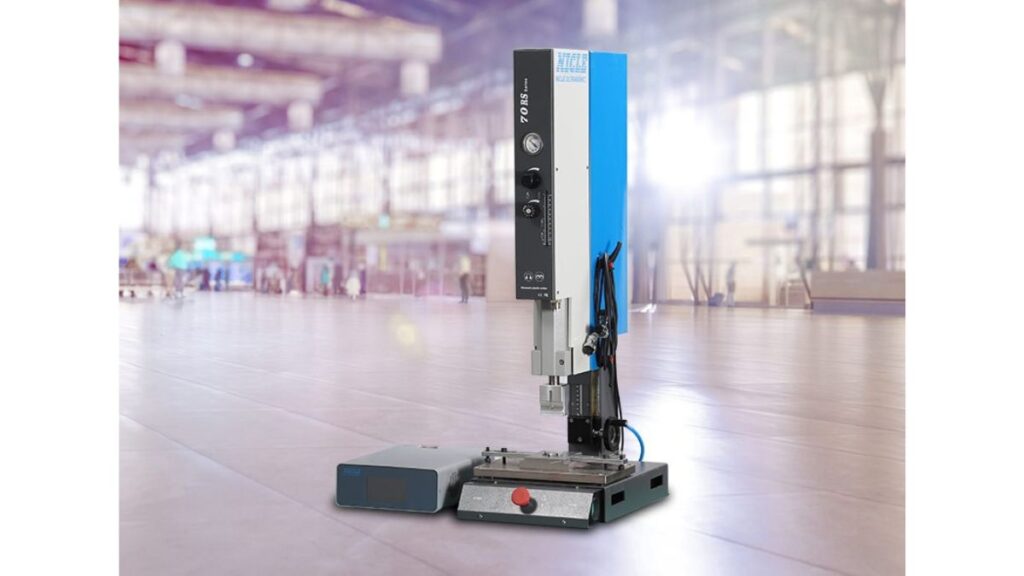Ultrasonic Welding Machine is a widely used technique for joining materials, particularly in industries such as automotive, electronics, and medical devices. It relies on high-frequency ultrasonic vibrations to generate heat at the contact surfaces of the materials being joined, creating a solid bond without the need for additional fasteners or adhesives.
Given the critical nature of the applications for which ultrasonic welding machines are used, ensuring their reliability and performance is paramount. This is where ultrasonic welding machine production comes into play, and a robust quality control and testing process is essential for achieving top-tier machines.
This article will explore the various quality control measures and testing methods applied throughout ultrasonic welding machine production, ensuring that machines are consistently capable of producing high-quality, durable welds.
Importance of Quality Control in Ultrasonic Welding Machines
The ultrasonic welding process is precise, and the equipment used must operate at specific parameters such as vibration frequency, amplitude, and pressure. If any of these parameters are out of balance, the quality of the weld can be compromised, which could lead to failures in critical applications. Therefore, ultrasonic welding machine production involves stringent quality control protocols to ensure that each machine can deliver reliable results.
Effective quality control serves several important functions:
Reliable Performance: Machines that operate consistently, producing high-quality welds every time.
Safety Assurance: Ensures that the equipment is safe for operators and complies with safety standards.
Cost Efficiency: Reduces the likelihood of defects and rejects, helping to keep production costs under control.
Longevity: Guarantees that the ultrasonic welding machine can withstand long-term use and continue to perform optimally.
Key Elements of Quality Control in Ultrasonic Welding Machine Production
The production of ultrasonic welding machines requires careful planning, from selecting high-quality materials to testing and calibration after assembly. Let’s take a closer look at the various stages of ultrasonic welding machine production and how each contributes to maintaining high quality.
1. Design and Material Selection
The foundation of any successful ultrasonic welding machine production lies in the design and materials chosen. Since the welding process relies on the generation of high-frequency ultrasonic vibrations, the machine’s components need to be built to handle these stresses efficiently.
Materials: High-performance materials like titanium and stainless steel are commonly used for the components that come into contact with the ultrasonic vibrations, such as the sonotrode and anvil. These materials are both durable and resistant to high temperatures.
Precision Engineering: The design must accommodate the accurate transmission of ultrasonic vibrations, ensuring that the transducer, horn, and sonotrode are properly aligned for optimal performance.
2. Component Inspection
Once materials are sourced, individual components undergo a thorough inspection before being assembled into the machine. Ultrasonic welding machine production involves scrutinizing components for defects to prevent issues further down the line.
Visual Inspections: Engineers perform visual checks to identify any cracks, deformations, or other defects that could compromise the machine’s functionality.
Dimensional Accuracy: Each component is measured to confirm that it meets the precise tolerances required for accurate assembly.
3. Assembly and Calibration
After passing inspection, the machine is carefully assembled. Calibration at this stage is essential for ensuring that all components are aligned and set to function as required.
Transducer Calibration: The transducer, which converts electrical energy into ultrasonic vibrations, must be calibrated to the correct frequency and amplitude.
Alignment of the Sonotrode and Horn: The horn and sonotrode must be correctly aligned with the workpiece to ensure that the ultrasonic vibrations are focused precisely where they are needed.
Testing and Validation in Ultrasonic Welding Machine Production
Testing is an essential step in ultrasonic welding machine production, ensuring that every machine functions as expected. During the testing phase, various parameters are checked, including frequency, pressure, force, and cycle time, to ensure the machine performs well under normal operating conditions.
1. Functional Testing
Functional testing is the first stage of the validation process. During this phase, the machine is run through a series of basic operations to confirm that all systems are functioning properly.
Basic Operation Test: The machine is powered on and tested to verify that all functions, such as power supply and frequency settings, work as expected.
Initial Test Weld: A test piece is welded to check if the ultrasonic energy is being delivered correctly. The weld is then evaluated for uniformity and strength.
2. Ultrasonic Frequency Testing
The frequency of the ultrasonic vibrations is critical in achieving a strong weld. Ultrasonic welding machine production requires precise frequency control to ensure that the welds are consistent and durable.
Frequency Response Test: An oscilloscope is used to confirm that the transducer operates at the set frequency. This is essential for ensuring that the ultrasonic vibrations are consistent and reliable during operation.
Amplitude Measurement: Amplitude, or the magnitude of the ultrasonic vibrations, must be within the specified range to create effective welds. Testing ensures that the machine can adjust its amplitude as needed based on material requirements.
3. Pressure and Force Testing
In addition to frequency, pressure is another critical factor in ultrasonic welding. The applied pressure needs to be within a specific range to create a reliable bond without damaging the workpiece.
Pressure Testing: The pressure applied by the sonotrode is measured and adjusted to ensure that it falls within the desired range.
Force Distribution Testing: It’s important that the force is distributed evenly across the workpiece. Any irregularities can lead to incomplete or poor-quality welds.
4. Cycle Time and Efficiency Testing
Efficiency is a key performance measure in ultrasonic welding machine production. Machines must complete welds quickly and efficiently, without unnecessary delays, to maintain productivity in industrial environments.
Cycle Time Measurement: The time it takes for the machine to complete a weld is measured. This is important for maintaining efficiency during production runs.
Energy Consumption: Ultrasonic welding equipment production is also concerned with energy efficiency. Testing ensures that the machine consumes energy effectively, without excessive power usage.
5. Weld Quality Testing
Once the machine passes functional and calibration tests, it’s time to test the quality of the welds it produces. This is one of the most critical phases of ultrasonic welding machine production. As the ultimate purpose of the machine is to produce strong, reliable bonds.
Tensile Testing: This test measures the strength of the weld by applying force to pull the bonded materials apart. The weld must hold up under stress without failure.
Visual and Cross-Sectional Inspection: The appearance of the weld is checked for consistency and quality. Cross-sectional analysis can also be performed to examine the depth and uniformity of the bond.
Final Inspection and Certification
Once the machine has passed all testing phases, it undergoes a final inspection to ensure it meets safety standards and regulatory requirements. During this phase, the machine is also cleaned, and any final adjustments are made before it is packaged for shipment.
Compliance Check: The machine is inspected to ensure it complies with international safety and quality standards such as ISO or CE.
Documentation: A certificate of compliance is issued to guarantee that the machine has passed all necessary tests and is ready for operational use.
The Role of Plastic Parts Welder Suppliers
In ultrasonic plastic welding machine production, the supplier of the welding components plays an important role in the overall quality of the product. A reliable plastic parts welder supplier can provide the necessary parts—. Such as sonotrodes, horns, and anvils—that are critical for efficient ultrasonic welding.
These components need to be manufactured with precision to ensure that they can withstand the forces and vibrations involved in the welding process.
The supplier should also have a deep understanding of the specific requirements of ultrasonic welding machines, ensuring that the components provided are compatible with the machines and will contribute to high-quality welds. Choosing the right plastic parts welder supplier is essential for ensuring that the final machine is of the highest standard.
Conclusion
The production of ultrasonic welding machines requires a precise and well-coordinated approach to quality control and testing. From design and material selection to component inspection and final testing. Every phase plays an essential role in ensuring that the machine performs at its best.
Ultrasonic welding machine production involves multiple checks and validations to ensure that the machines deliver strong, reliable welds every time. By maintaining rigorous quality control throughout the production process, manufacturers can produce ultrasonic welding machines that are both safe and efficient, contributing to the success of industries that rely on this technology.
As ultrasonic plastic welding machine production continues to grow in popularity across various sectors. Including medical devices, automotive, and electronics, ensuring top-tier quality through strict testing and control will be crucial for meeting the ever-increasing demands for precision and performance in manufacturing processes.
Additionally, working with a reputable plastic parts welder supplier can help ensure that all necessary components are of the highest quality. Further enhancing the overall reliability and durability of ultrasonic welding machines.
If you want to read more, visit our blog page. We have more topics!







